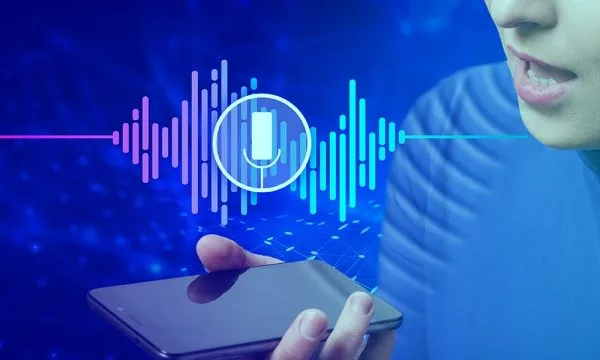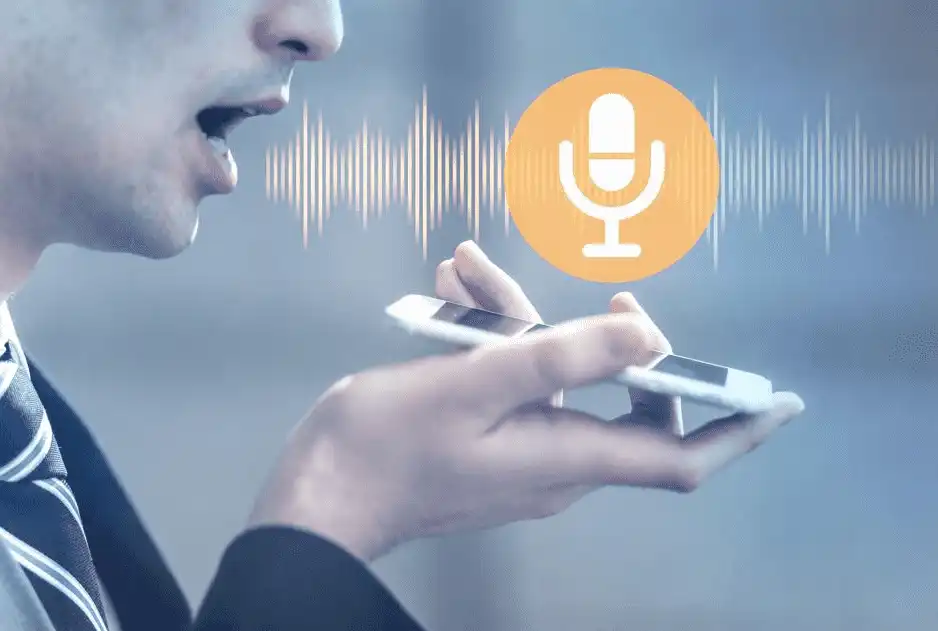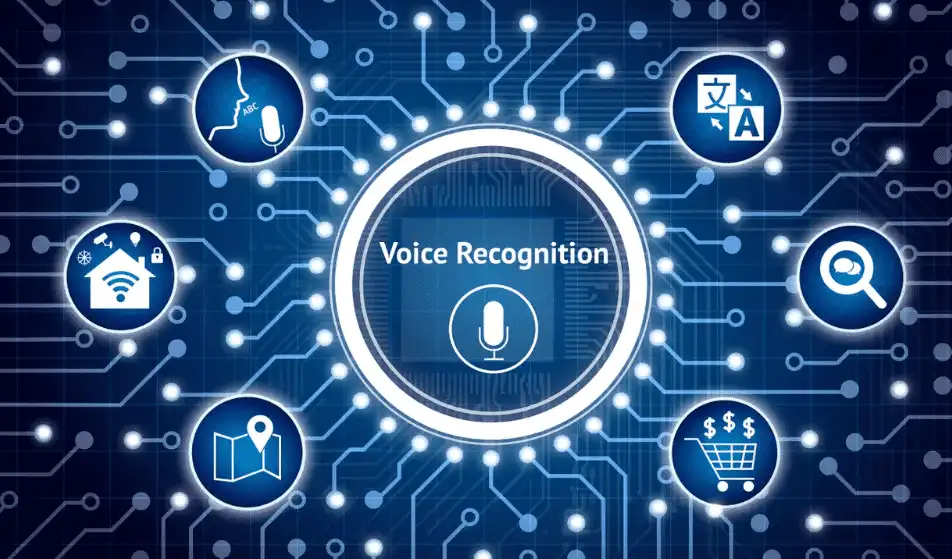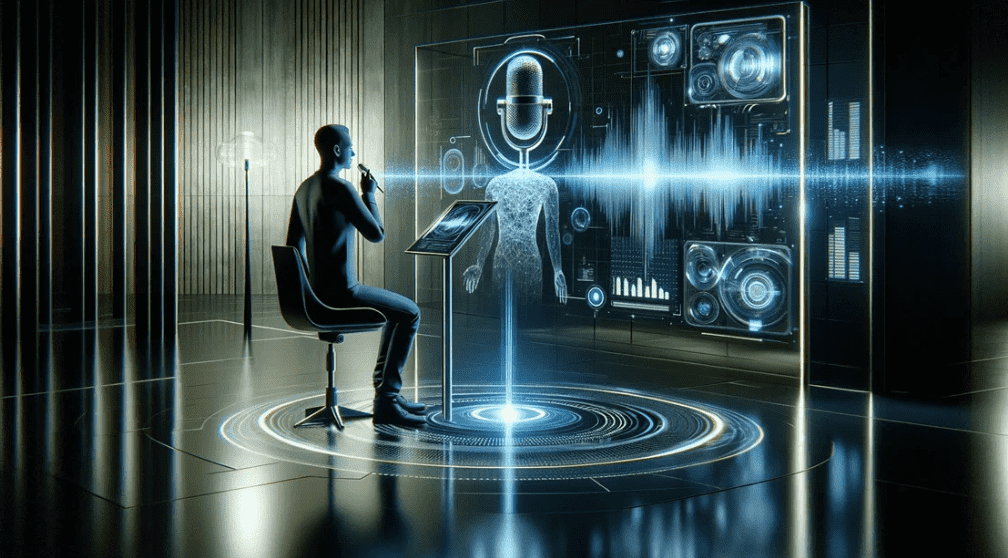How Is AI Improving Voice Recognition Technology? Voice recognition technology has come a long way from its early days of limited accuracy. Thanks to advancements in Artificial Intelligence (AI), today’s voice recognition systems are not just better at understanding what we say but also at grasping the nuances of human speech. But how exactly is AI making such significant strides in this field?
Imagine AI as a supercharged brain that continuously learns and adapts. Just like how we improve our skills over time with practice, AI algorithms become more accurate as they process more data. This process, known as machine learning, forms the backbone of modern voice recognition technology.
One key way AI enhances voice recognition is through Natural Language Processing (NLP). NLP enables systems to interpret and respond to human language in a way that feels natural and conversational. It’s like teaching a computer to not just hear words but understand context, intent, and even emotions behind the spoken words.
Moreover, AI algorithms are now capable of handling diverse accents, dialects, and speech patterns. This adaptability is crucial in making voice recognition technology more inclusive and accessible to a global audience. What might have been a barrier in the past—accents that vary across regions—is now something that AI-powered systems can navigate effortlessly.
Another area where AI shines is in its ability to continuously improve. Every interaction with a voice recognition system provides feedback that AI uses to refine its models. This feedback loop means that the more we use these technologies, the better they become at understanding us accurately.
In essence, AI is not just improving voice recognition technology; it’s redefining it. By harnessing the power of machine learning and NLP, AI is turning what was once science fiction into everyday reality. As these technologies evolve, the future promises even more seamless interactions between humans and machines, where speaking to a device feels as natural as chatting with a friend.

AI Breakthroughs: Revolutionizing Voice Recognition Technology
Voice recognition technology has evolved significantly over the years. What started as basic commands has now transformed into sophisticated systems capable of understanding context, accents, and even emotions in speech. Thanks to AI, machines are learning to interpret human language more intuitively, mimicking the way we communicate with each other.
One of the key breakthroughs in AI voice recognition is its ability to adapt to different voices and accents. Think about it like this: just as humans understand variations in speech among different people, AI models can now decipher commands regardless of whether you have a Southern drawl or a British accent. This adaptability is crucial for making voice assistants accessible and user-friendly across diverse populations.
Moreover, AI has enabled voice recognition systems to become more accurate and responsive. Gone are the days of repeating yourself multiple times to get your device to understand you. With advanced algorithms and machine learning, these systems continuously improve their accuracy by learning from each interaction. It’s like having a personal assistant that gets better at understanding you over time, adapting to your unique way of speaking.
Another fascinating aspect of AI-driven voice recognition is its integration into everyday devices. From smartphones to cars and home appliances, voice technology is everywhere. This integration not only enhances convenience but also opens up new possibilities for hands-free interaction in various domains, from healthcare to automotive industries.

From Clarity to Context: AI’s Role in Advancing Voice Recognition
Voice recognition has come a long way from its early days of limited vocabulary and accuracy issues. AI algorithms, powered by deep learning and natural language processing (NLP), have enabled systems to not only understand words but also grasp the meaning behind them. This shift from mere clarity to context marks a significant leap forward in usability and functionality.
Consider how AI interprets spoken language. Just like a skilled interpreter in a foreign land, AI deciphers the nuances of speech—intonation, emphasis, even dialects—making sense of what is said and transforming it into actionable data. This capability is crucial in applications ranging from virtual assistants in smartphones to smart speakers in homes and even in specialized fields like healthcare and finance.
The secret behind AI’s prowess lies in its ability to learn from vast amounts of data. By analyzing patterns in speech and associating them with corresponding actions or responses, AI models continuously improve accuracy over time. This iterative learning process mimics human cognition, refining its understanding with each interaction.
Moreover, AI-driven voice recognition is not just about understanding words. It’s about anticipating needs and providing seamless user experiences. Picture asking your smart device a complex question and receiving a precise, informative answer instantly—this is the promise of AI-enabled voice technology.
As AI continues to evolve, so too will voice recognition capabilities. Future innovations could include even more intuitive interfaces, personalized responses tailored to individual preferences, and integration with other smart technologies for a truly connected ecosystem.

The Future Speaks: AI Enhancements in Voice Recognition Unveiled
Imagine a world where your voice assistant understands you as well as a close friend, anticipating your needs and responding with accuracy and speed. This isn’t science fiction anymore; it’s the reality brought by advancements in AI-driven voice recognition.
One of the most awe-inspiring aspects of these enhancements is their ability to adapt to diverse accents, languages, and even emotional nuances in speech. They’re no longer just listening to words; they’re understanding context and intent, which opens up a whole new realm of possibilities for personalized user experiences.
Think about it: you speak naturally, and your device not only comprehends every word but also knows whether you’re asking a question, expressing a command, or simply conversing. It’s like having a conversation with an incredibly knowledgeable assistant who’s always ready to help.
These AI enhancements are not limited to smartphones or smart speakers; they’re permeating into vehicles, household appliances, and even workplaces. The future workplace might have AI assistants that can transcribe meetings accurately, summarize key points, and even suggest actions based on discussions—all through voice commands.
Moreover, the impact goes beyond convenience. AI-powered voice recognition has the potential to make technology more accessible to people with disabilities, enabling them to navigate and control devices effortlessly.
As these technologies continue to evolve, one can only wonder what the future holds. Will we eventually communicate with machines as naturally as we do with each other? Perhaps AI will one day not only understand our words but also empathize with our emotions, making interactions even more human-like.
Beyond Words: AI’s Impact on Precision and Speed in Voice Recognition
AI, or Artificial Intelligence, has revolutionized voice recognition by leaps and bounds. Gone are the days of robotic responses and misunderstood words. Today, AI enables devices to not only recognize speech but to understand the nuances of human language with astounding accuracy. This precision is akin to a skilled musician effortlessly playing a complex piece, each note clear and resonant.
One of the key elements that AI brings to voice recognition is its ability to adapt and learn. Much like a diligent student, AI algorithms continuously improve as they process more data and interact with more voices. This adaptive learning allows systems to refine their understanding of accents, intonations, and even colloquialisms, making interactions more natural and effective over time.
Moreover, AI enhances the speed at which voice recognition operates. Think of it as a supercharged race car zooming down a track with pinpoint accuracy. By leveraging powerful processors and sophisticated algorithms, AI can process spoken words almost instantaneously, transforming verbal commands into actions without any noticeable delay.
The impact of AI on voice recognition extends far beyond convenience; it opens doors to new possibilities across industries. In healthcare, AI-powered voice recognition systems assist doctors in transcribing patient records swiftly and accurately, reducing administrative burden and improving patient care. In customer service, AI enables businesses to offer responsive and personalized interactions, enhancing overall customer satisfaction.
As we continue to witness AI’s evolution, the future of voice recognition holds promise for even greater advancements. Imagine a world where devices anticipate your needs before you utter a word, where communication is seamless across languages and cultures. This is the transformative power of AI in voice recognition—a testament to human ingenuity and technological innovation at its finest.
Unlocking the Human Voice: AI’s Latest Innovations in Recognition
Have you ever wondered how technology seems to understand us better with each passing day? AI’s advancements in voice recognition technology are making it possible for machines to comprehend human speech with astonishing accuracy. From virtual assistants on our phones to smart home devices, AI is transforming how we interact with technology simply by recognizing our voices.
One of the breakthroughs driving this transformation is the ability of AI systems to distinguish between different voices. Just like humans can recognize voices of friends and family, AI can now differentiate between speakers with remarkable precision. This means personalized experiences tailored to your voice, whether it’s adjusting your preferences on streaming services or setting reminders that only you can access.
Furthermore, AI-powered voice recognition is not limited by language barriers. It’s learning to understand diverse accents, dialects, and languages, breaking down communication barriers on a global scale. This inclusivity opens doors to more accessible technology for everyone, regardless of their linguistic background.
Behind these advancements lies sophisticated machine learning algorithms that analyze vast amounts of speech data. These algorithms learn and improve over time, making voice recognition more accurate and responsive. They adapt to individual speech patterns, refining their understanding with each interaction, much like a skilled listener who gets better at understanding you the more they hear you speak.
As AI continues to evolve, so too will its ability to unlock the full potential of the human voice. Whether it’s enhancing accessibility, improving user experiences, or enabling new forms of interaction, the future of voice recognition holds limitless possibilities. It’s not just about what AI can do—it’s about how seamlessly it integrates into our lives, making everyday tasks simpler and more intuitive.
Machine Learning Meets Speech Recognition: AI’s Evolutionary Leap
Machine learning, the backbone of modern AI, empowers computers to learn from vast amounts of data and improve their performance over time without explicit programming. When applied to speech recognition, machine learning algorithms analyze spoken language patterns, accents, intonations, and contextual cues to accurately transcribe and comprehend human speech.
This evolutionary leap in AI’s capabilities is transforming industries worldwide. From customer service and healthcare to automotive and entertainment, the integration of speech recognition technology is revolutionizing how we interact with machines. Now, instead of typing commands or pressing buttons, users can simply speak naturally to devices, which respond intelligently and swiftly.
Think about your smartphone’s virtual assistant. It understands your voice commands, schedules meetings, provides weather updates, and even tells jokes—all thanks to sophisticated speech recognition algorithms powered by machine learning. This seamless interaction between humans and machines not only enhances user experience but also boosts productivity and efficiency across various sectors.
But how does machine learning make speech recognition so accurate? Imagine teaching a child to recognize different animals by showing them pictures and saying their names. Initially, the child might confuse a dog with a cat, but with each correct example, they learn to distinguish between them. Similarly, machine learning algorithms are trained on vast datasets of recorded speech, learning to recognize patterns and refine their understanding of language nuances.
As AI continues to evolve, the possibilities for speech recognition are boundless. Future advancements may include real-time language translation during conversations, personalized voice-controlled healthcare assistants, and even more intuitive smart home devices that anticipate our needs before we voice them.
The convergence of machine learning and speech recognition marks a significant milestone in the evolution of AI. It bridges the gap between humans and technology, paving the way for a future where interactions with machines are as natural as chatting with a friend. As this technology continues to advance, it promises to reshape industries, enhance user experiences, and unlock new realms of innovation we’ve only begun to imagine.
Voice Recognition 2.0: How AI Is Redefining User Interaction
Voice recognition technology has undergone a remarkable evolution with the advent of AI, transforming how we interact with devices. Gone are the days of clunky voice commands that barely understood our intentions. Now, AI-powered voice recognition, often termed Voice Recognition 2.0, is revolutionizing user experiences across various platforms.
Imagine speaking to your smartphone, and it not only understands every word but also anticipates your needs. This is the power of Voice Recognition 2.0. AI algorithms have become adept at processing natural language, enabling devices to interpret commands contextually. Whether you’re asking for directions, searching for a recipe, or controlling smart home devices, AI understands the nuances of human speech better than ever before.
One of the key advancements driving Voice Recognition 2.0 is deep learning. AI systems learn from vast amounts of data, continually improving their accuracy and responsiveness. This means your voice assistant not only recognizes your voice but also adapts to your preferences over time. It’s like having a personal assistant that gets smarter with every interaction.
The impact of AI-driven voice recognition extends beyond convenience. It enhances accessibility for people with disabilities, making technology more inclusive. Tasks that once required typing or navigating complex menus can now be effortlessly performed through voice commands, leveling the playing field for all users.
In the realm of customer service, businesses are leveraging Voice Recognition 2.0 to provide more personalized experiences. Imagine calling a support line and having a virtual agent not only understand your issue but also empathize with your frustration. AI enables these agents to analyze tone and sentiment, delivering human-like interactions that enhance customer satisfaction.
Looking ahead, Voice Recognition 2.0 holds immense potential for industries like healthcare, where precise communication is critical. AI-powered voice assistants can help doctors update patient records in real-time or aid in remote diagnostics, transforming healthcare delivery.
As AI continues to evolve, so too will Voice Recognition 2.0. The future promises even more intuitive interactions, where devices seamlessly integrate into our lives, anticipating our needs before we even speak. This paradigm shift in user interaction marks a new era where technology truly understands and responds to us, making everyday tasks simpler and more enjoyable.



